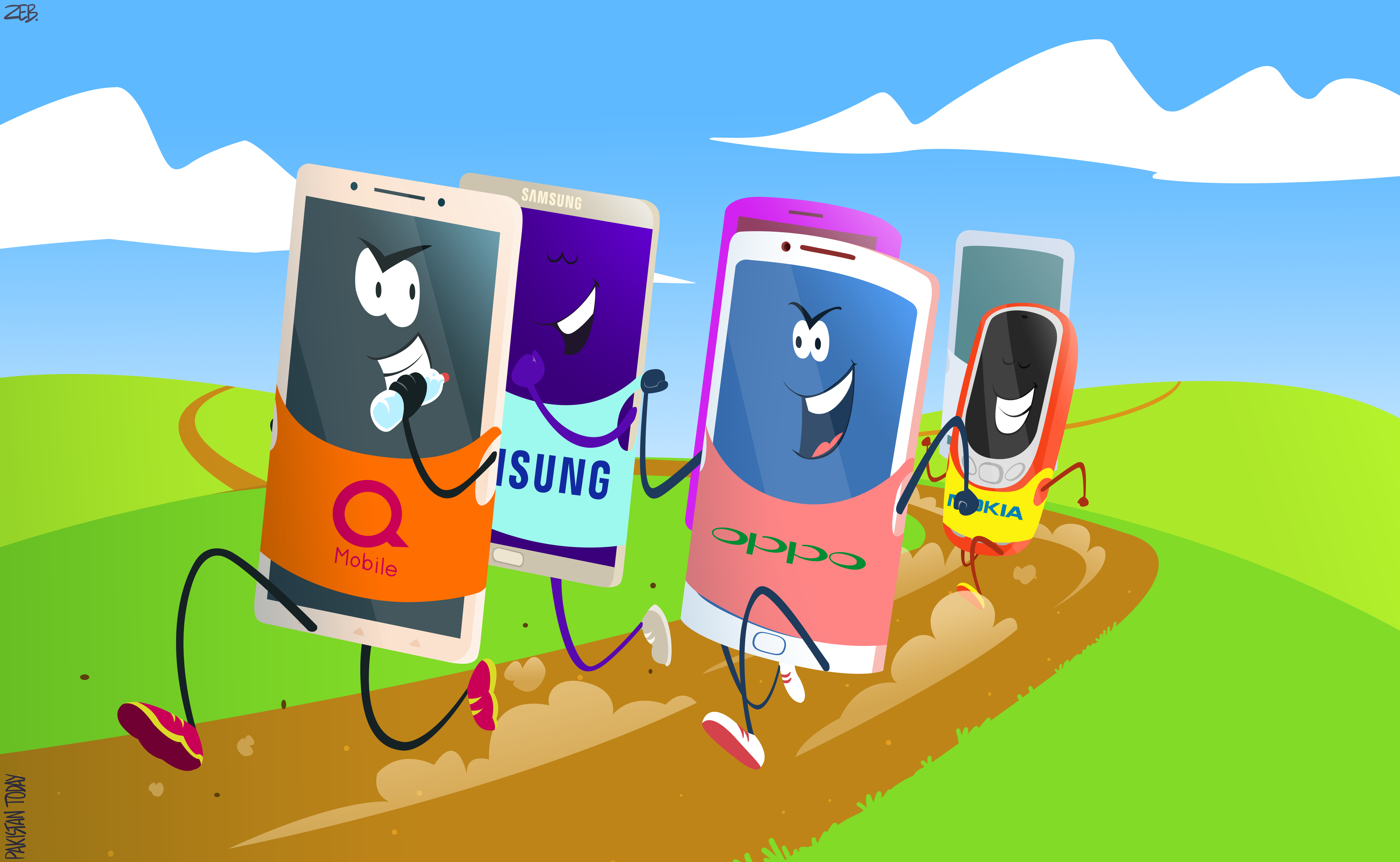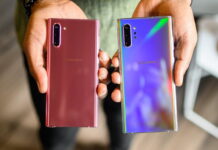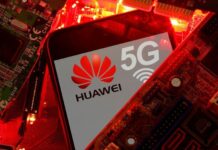When it comes to hardware technology, one hardly finds a local brand as big as Qmobile. Regardless of which side of the argument one stands, Chinese phones imported and distributed as a Pakistani brand are a source of national pride, they can’t deny one thing: Qmobile is huge a success story.
Founded in 2009, the Karachi-based company took the market by a storm within a few years, surpassing longtime market leader Nokia to become the largest mobile phone company based on the number of handsets it sells in the country – in the process the brand earning the attention of Harvard Business School!
Qmobile’s rise to fame can largely be attributed to its aggressive marketing campaigns – incorporating retail branding, product placement and brand endorsements from the hottest celebrities from across the sub-continent, the Bollywood stars included. This last, but by no means the least, to gain the maximum number of eyeballs endures.
High-end features for a pittance make it rock
That aside, one cannot deny Qmobile provided products with fairly high-end features at prices affordable for most Pakistanis and became very popular in lower income groups, especially in the rural areas. If it were not for Qmobile, many Pakistanis would have to wait longer to buy their first smartphone.
The local giant has been rocking the market for many years as none of the Chinese kickoffs that stormed the market about the same time could threaten its dominance in the country.
However, things have started to change off late. With students in Cambridge studying Qmobile’s success phenomena, its leadership in Pakistan has been put to the test because some internationally established players have entered the market with aggressive strategies, threatening the status quo for the first time in recent years.
The major factor that attracted new players is a rapid consumer shift from basic feature phones to smartphones, thanks to the explosive growth in the country’s mobile broadband users, which increased from under four million before the rollout of 3G and 4G services to 41 million at the end of May 2017.
The market size has also increased and varies depending on which data or study one quotes, but by most accounts, it ranges from one to two million mobile phones per month.
With mobile operators selling more than a million new broadband connections every month, the demand for smart devices has increased manifold. As a result, the smartphone penetration has reached 30 percent, up from less than 10 percent when Qmobile launched its own range of affordable smart devices. And that has changed things.

Pakistan, undergoing the inevitable transition
“Pakistan is following in the footsteps of other more developed markets as it undergoes the inevitable transition from feature phones to smartphones,” says Isaac Ngatia, a research analyst at International Data Corporation, a global market intelligence firm based out of Massachusetts. This shift is being driven by rollout of supporting infrastructure and improved offers from both local and international vendors, and a general increase in smartphone demand, he says.
Pakistan’s mobile phone market continued its strong growth during the first quarter of 2017, registering a year-on-year increase of 10 percent in shipments and 22 percent in value, according to IDC. Shipments of smartphones for the period increased by 28 percent, it said. This shift resulted in an influx of new players over the last couple of years. These are mostly established companies that have launched with aggressive plans and seem to be changing the market dynamics.
“The Pakistan smartphone market is growing increasingly competitive,” says Nabila Popal, a senior research manager at IDC. “The recent entry of brands such as Xiaomi, as well as the presence of other Chinese brands like Infinix and OPPO, is providing consumers with a wider choice of smartphones at more affordable prices,” she adds.
Of all the latest entrants, OPPO seems to be the most aggressive in its strategy. The company is known to have a focus on brick and mortar model with a large sales team and distribution network. According to both IDC and GFK, two multinational firms that provide market research, OPPO was one of the top four smartphone brands in Pakistan, closely following Huawei – Qmobile and Samsung being the top two.

According to the data available with Profit, Qmobile, which remains the strongest player in the entry level smartphones that sell for $100 or less, is losing ground in mid-range ($100-$250) 3G phones to OPPO and Infinix as of February 2017.
“OPPO is doing what Qmobile did in the beginning,” said Parvez Iftikhar, an Islamabad-based expert on information and communications technology – in a March-2016 interview with this correspondent, Iftikhar had predicted Qmobile would face stiff competition going forward once players like Xiaomi enter Pakistan.
“They have come with a strong brand and are giving good competition to the likes of Qmobile, which is very much visible,” the ICT expert said of OPPO. They are spending a lot of money to even brand small shops just like beverages giants Pepsi-co and Coca-Cola once did, he said. Closely following OPPO is Infinix, another strong contender in entry level smartphones. A market survey by Profit indicates a similar trend. The majority of the mobile phone shops Profit spoke to in Saddar’s electronics market, the largest in the city, said Infinix was one of the top competitors for Qmobile. Giving an example, Muhammad Muzzakir of Velatronic said the Infinix Hot 4 smartphone offers specs similar to that of Qmobile’s E2 but the former is much cheaper and sells more at his shop. “We haven’t received any complaints about this phone so far,” he said of Hot 4.
Closely following OPPO is Infinix, another strong contender in entry level smartphones. A market survey by Profit indicates a similar trend. The majority of the mobile phone shops Profit spoke to in Saddar’s electronics market, the largest in the city, said Infinix was one of the top competitors for Qmobile. Giving an example, Muhammad Muzzakir of Velatronic said the Infinix Hot 4 smartphone offers specs similar to that of Qmobile’s E2 but the former is much cheaper and sells more at his shop. “We haven’t received any complaints about this phone so far,” he said of Hot 4.
OPPO and Infinix aren’t the only players challenging what has long been a Qmobile stronghold, Huawei and Lenovo are also aggressively competing with it in both the low and mid-range smartphones segment.
A relatively new entrant, Lenovo has become one of the top 10 smartphone brands in the country. And it doesn’t want to stop here. “We envision positioning ourselves in the top five cell phone companies,” Sharay Shams, General Manager Lenovo Smartphones Middle East, told Profit. The company recently unveiled its Moto Z line of smartphones through its subsidiary Motorola Mobility in Pakistan and is targeting a full array of smartphone segment from $100 to $750.
Smartphones remain the growth area thus the ultimate target for new players, but the feature phone segment too seems to be going through some changes, in other words, more worries for Qmobile, which controls more than half of that market.
Nokia regains lost ground
After initially losing to Qmobile, Nokia has sustained its market in the feature phones selling between $30 and $75. In fact, the Finnish giant has increased its share to more than 60 percent of the market when it comes to a price range of $30-$50 as of February 2017, up from 40 percent of the fiscal year 2016.
“Qmobile is one of our major competitors,” Kamran Khan, Head of Near East for the Home of Nokia Phones (HMD) told Profit in an interview. The Nokia country head said Pakistan was among top three markets for them in the region.
Nokia has relaunched its classic 3310 feature phone recently and trying to regain the market it lost earlier through various measures. The company has partnered with Jazz, the largest cellular operator in Pakistan, for the launch of its new range of smartphones including Nokia 6, Nokia 5 and Nokia 3 as well as its feature phone Nokia 3310.

Under the partnership, Jazz will offer promotions to customers on these phones under the deal. The company also partnered with Zeiss for improvement of their phone’s camera technology.
“Nokia’s partnership with Google and Foxconn on Android would take it one step ahead of their competitors,” Khan said talking about the company’s plans for smartphone segment.
Qmobile must be watching Nokia closely, but it has a host of other players to deal with as well. If one goes below $30, Maxx is catching up very fast and several other small players like VGO Tel, G5 and Rivo too seem to be doing well.
Experts, as well as research firms like IDC, believe the feature phone segment, which has stagnated, will continue to show some resilience to smartphones in the short term. However, barring Qmobile, none of the top players seems to be competing for these low-priced phones.
Focus on 4G
Both Huawei and Samsung are more focused on smartphones, saying they don’t see value in the basic feature phones. The latest shipment trends also indicate the vendors are concentrating more on the fast growing high-end segments, especially 4G.
“It is important to note that market is leapfrogging to 4G-enabled handsets, with shipments of these devices up 189 percent in Q1 of 2017,” IDC said in a press release.
This implies vendors are preferring to ship in 4G phones as they wait for the operators to roll out their networks while hoping consumers will experience the convenience of 4G whenever and wherever it becomes available, it said.
However, that also explains the rising competition and changing dynamics of the smartphone market. For example, Huawei remains the third largest smartphone brand in the country, much like its global position, but its share in 4G segment is shrinking. OPPO, on the other hand, has done exceptionally well to become the second largest 4G brand. (Our queries to OPPO to know their views about this and other issues were not entertained.)

With competition becoming more intense, Qmobile is not the only company to take a hit. Samsung, the undisputed leader in high-end phones, also got some hammering in the mid-range phones. The Korean giant saw its share in 3G phones shrunk from nearly 20 percent in September 2016 to less than 10 percent in February 2017.
Samsung’s responses to our queries were awaited till the filing of this report, but an official aware of the developments in the company told Profit, Samsung is now largely aiming for the 4G market.
“Consumer trend is shifting towards 4G, so overall market is gearing for a piece of it,” the official said. Requesting anonymity, he said Samsung is not bothered about the competition and welcomes it instead because it will expand the market size. The smartphone market is too small compared to regional peers, he said.
Qmobile, Samsung neck and neck
Both Qmobile and Samsung market themselves as number one smartphone brand and often take a jibe at each other. Who leads the market remains a grey area unless both the companies share their financials. The latest IDC data says Qmobile accounts for more than 50 percent of the smartphone market, while GFK studies reflect Samsung has its nose in front with a slight lead over the former in volume and is much ahead of them in value.
Both of them dominate in one way or the other, but barring some competition in the mid-range phones, the two have not been competing directly. And this is evident from the fact that Samsung is increasingly focused on the high-end 4G market while low-priced feature phones and entry-level smartphones remain Qmobile’s stronghold.
With new entrants challenging the status quo, Samsung seems to be playing on its strength by moving focus to 4G segment – this may have come at the expense of mid-range 3G phones though. On the other hand, Huawei, which entered the market much ahead of OPPO, Infinix and Xiaomi, denied comment on rising competition from OPPO in 4G segment.

As far as Qmobile is concerned, it will be challenging for the local giant to weather the storm, for it wasn’t really targeting the high-end market in the first place. The local giant had a small share in 4G phones, and that too seems to be shrinking over the past few months. As competition in entry-level and mid-range smartphones intensify, can the local giant prevent its Iron Grip on the market from slipping away?
“We are still the largest smartphone brand in the country,” Group Director Qmobile Zeeshan Qureshi said adding the company was selling more than 300,000 smartphones per month. “The resale value of Qmobile is also very high, one of the reasons for the brand’s success.”
The NUST graduate disagreed Qmobile was losing market to new players. Private studies, such as that of GFK don’t provide correct estimates because of their limited reach, he said.
High taxation encourages smuggling
Iftikhar, the ICT expert seconded Qureshi but added no private study can fully document the market as not all players import all of their phones legally. In fact, according to Iftikhar and some industry sources, the import data provided by customs authorities may also not provide the exact figures.
“I think about half of the market is not importing legally. Since the government increased taxes on import of mobile phones, the smuggling or grey market has increased,” Iftikhar said.
High taxation on import of mobile phones remains a major problem for every single player in the market, and more so for those importing feature phones. The government imposed import duty Rs650 on low-end smartphones in the latest budget, which is in addition to a regulatory duty of Rs250.
“If an importer evades Rs1,000 tax on a single smartphone, and pays Rs200 per phone to a Khepia, imagine how much that translates to his profit on a Khep of thousands of mobiles,” Iftikhar said explaining how taxation results in grey market expansion
There has been a 123 percent increase in taxes over mobile phones, which benefits the grey market and create problems for legitimate industry, Qureshi said adding the government should reduce taxes to encourage legal imports.

The ‘selfie aspect’
While he disagreed with the findings of the private study, which show newer players gaining more ground in the market, Qureshi admitted they were little late to respond to a paradigm shift in the market: ‘the selfie aspect’. Qmobile has overcome that issue with its new range of smartphones A Series and X Series, two of their aggressive product launches, he said.
Responding to a question about Nokia, Qureshi said they don’t see it as a comeback. “Nokia has always remained strong in that segment, selling 150,000 to 200,000 units,” he said. Let alone losing the market, the company’s group director said they are going to launch some new products, including LED lightings and TVs.
However, the local giant doesn’t seem to ignore the fact that the market is shifting to 4G. It has entered a partnership with Telenor Pakistan, the second largest cellular operator, for larger 4G penetration in the country.

That said, it won’t be a smooth selling for any brand to dominate in the 4G segment, the new battlefield for smartphones. With competition so intense, no player seems to be taking it lightly.
“4G hasn’t penetrated many areas of Pakistan, but by the time it comes online, this turns into a potential market for smartphone makers,” said Shams of Lenovo, which has partnered with the logistics giant Muller and Phipps (M&P) and Mobile Sales and Distribution to reach far-flung areas of the country.

A large geographical area of Pakistan still lacks 4G coverage but most brands are already positioning themselves towards 4G market, the area where most of the growth is expected to come.
Smartphone shipments, which were 50 percent of the total imports in the first quarter, will increase by 21 percent for 2017, IDC says. “Expansion of the country’s 4G network coupled with the shipment of 4G-compliant devices will be the key factors fueling this growth,” it adds.

























Farooq please get back to me. I want to understand that from where did u get the results of mobile phones shown in the graph. It’s really urgent please get back to me.
03468283550
Comments are closed.